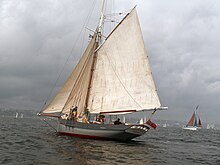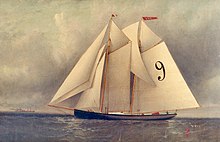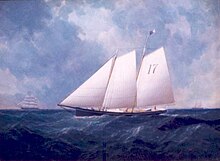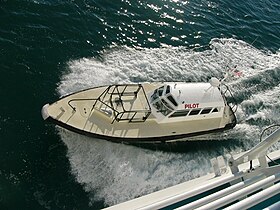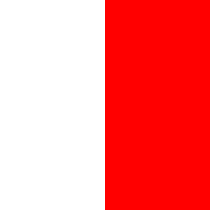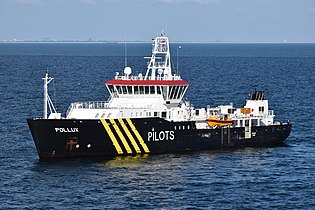
A schooner is a type of sailing vessel defined by its rig: fore-and-aft rigged on all of two or more masts and, in the case of a two-masted schooner, the foremast generally being shorter than the mainmast. A common variant, the topsail schooner also has a square topsail on the foremast, to which may be added a topgallant. Differing definitions leave uncertain whether the addition of a fore course would make such a vessel a brigantine. Many schooners are gaff-rigged, but other examples include Bermuda rig and the staysail schooner.

A cutter is a name for various types of watercraft. It can apply to the rig of a sailing vessel, to a governmental enforcement agency vessel, to a type of ship's boat which can be used under sail or oars, or, historically, to a type of fast-sailing vessel introduced in the 18th century, some of which were used as small warships.
This glossary of nautical terms is an alphabetical listing of terms and expressions connected with ships, shipping, seamanship and navigation on water. Some remain current, while many date from the 17th to 19th centuries. The word nautical derives from the Latin nauticus, from Greek nautikos, from nautēs: "sailor", from naus: "ship".

A maritime pilot, marine pilot, harbor pilot, port pilot, ship pilot, or simply pilot, is a mariner who has specific knowledge of an often dangerous or congested waterway, such as harbors or river mouths. Maritime pilots know local details such as depth, currents, and hazards. They board and temporarily join the crew to safely guide the ship's passage, so they must also have expertise in handling ships of all types and sizes. Obtaining the title "maritime pilot" requires being licensed or authorised by a recognised pilotage authority.

Zodiac is a two-masted schooner designed by William H. Hand, Jr. for Robert Wood Johnson and J. Seward Johnson, heirs to the Johnson & Johnson pharmaceuticals fortune. Hand intended to epitomize the best features of the American fishing schooner. The 160-foot-long (49 m), 145-ton vessel competed in transatlantic races. In 1931 the vessel was purchased by the San Francisco Bar Pilots Association, brought from the Atlantic, modified and placed in service as the pilot vessel California serving as such until retired in 1972.
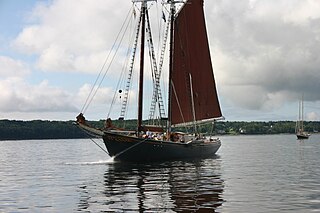
Roseway is a wooden gaff-rigged schooner launched on 24 November 1925 in Essex, Massachusetts. She is currently operated by World Ocean School, a non-profit educational organization based in Boston, Massachusetts, and is normally operated out of Boston, Massachusetts and Saint Croix, U.S. Virgin Islands. She was designated a National Historic Landmark in 1997 as the only known surviving example of a fishing schooner built specifically with racing competition as an objective. In 1941, Roseway was purchased by the Boston Pilot's Association to serve as a pilot boat for Boston Harbor, as a replacement for the pilot-boat Northern Light, which was sold to the United States Army for war service.

George Steers was a designer of yachts best known for the famous racing yacht America. He founded a shipyard with his brother, George Steers and Co, and died in an accident just as he was landing a major contract to build boats for the Russian Czar.
Board of Pilot Commissioners for the Bays of San Francisco, San Pablo, and Suisun is the California state agency responsible for licensing and regulating pilots within one of the largest harbors in the world and the tributary Sacramento River delta. It licenses and regulates up to 60 pilots of the San Francisco Bar Pilots Association. They are called "bar pilots" because they maneuver ships across a large and dangerous sand bar just outside the Golden Gate at the mouth of San Francisco Bay.
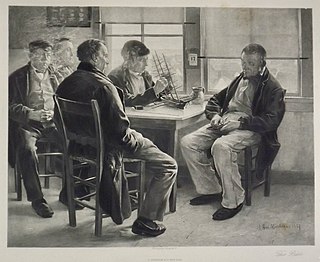
Sandy Hook Pilots are licensed maritime pilots that are members of the Sandy Hook Pilots Association for the Port of New York and New Jersey, the Hudson River, and Long Island Sound. Sandy Hook pilots guide oceangoing vessels, passenger liners, freighters, and tankers in and out of the harbor. The peninsulas of Sandy Hook, and Rockaway in Lower New York Bay define the southern entrance to the port at the Atlantic Ocean.

A Bristol Channel pilot cutter is a type of sailing boat used until the early part of the 20th century to deliver and collect pilots to and from merchant vessels using ports in the Bristol Channel. Each pilot worked individually, in competition with other pilots. Especially after 1861, the level of competition required larger and faster cutters, as pilots went "seeking" at much greater distances. The resulting boats were known for their ability to sail in the most extreme weather, for speed and sea-kindliness. They were designed for short handed sailing, often manned only by a man and an apprentice, with one or sometimes two pilots on board.

George W. Blunt, completed in 1856, was a schooner built in New York that operated as a New York Sandy Hook pilot boat designated Pilot Boat No. 11. The schooner was used to pilot vessels to and from the Port of New York and New Jersey. That schooner was sold to the United States Navy in 1861, renamed and commissioned as the USS G. W. Blunt (1856), serving in the South Atlantic Blockading Squadron in the South. A second schooner, also named George W. Blunt, was built in East Boston in 1861 and purchased to replace the first schooner as a pilot boat.

The Moses H. Grinnell was a 19th-century pilot boat built in 1850 for the New York maritime pilots. She was designed by the yacht designer George Steers. The Grinnell was the first pilot boat to feature a fully developed concave clipper-bow, which was to become the New York schooner-rigged pilot boat's trade mark. This new design was the basis for the celebrated yacht America.

The Charles H. Marshall was a 19th-century Sandy Hook pilot boat built by Henry Steers in 1860 for a group of New York pilots. She was in the Great Blizzard of 1888, the same year the National Geographic came out with an article about the successful struggle made by the crew of the Marshall. The boat was named in honor of the American businessman Charles Henry Marshall. In the age of steam she was sold in 1896.

The Varuna was a 19th-century Boston pilot boat, built by Montgomery & Howard at Chelsea, Massachusetts in 1890, for a group of Boston pilots. She was designed by yacht designer Edward Burgess, known for his America's Cup defenders. She was the first centerboard pilot-boat in operation in the Massachusetts Bay. The Varuna went out of service in 1912 because of the introduction of steam power into pilot-boats. She was later sold to Stephen Simmons to be used as a trading vessel between ports in the Spanish Main in 1913.
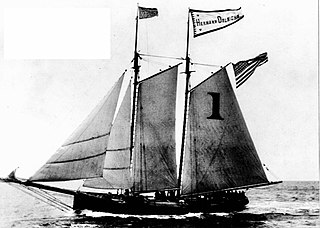
The Hermann Oelrichs was a 19th-century Sandy Hook Pilot boat, built in 1894 by Moses Adams at Essex, Massachusetts for a group of New York Pilots. She helped transport New York City maritime pilots between inbound or outbound ships coming into the New York Harbor. The Herman Oelrichs was said to be the fastest of the New York pilot fleet. She was built to replace the pilot boat Hope, that was wrecked in 1890.

The Friend was a 19th-century pilot boat built by Daniel D. Kelley & Holmes East Boston shipyard in 1848 for Boston pilots. She helped transport Boston maritime pilots between inbound or outbound ships coming into the Boston Harbor. The Friend was one of the last of the low sided, straight sheared schooners built in the 1840s for Boston pilots. The second Boston pilot boat Friend was built in 1887. Her name came from the older Friend that was in the service in the late 1840s. Captain Thomas Cooper sold the Friend to New York pilots in 1893. Cooper replaced the Friend with the pilot-boat Columbia in 1894.

The Coquette was a 19th-century yacht and pilot boat, built in 1845 by Louis Winde, at the Winde & Clinkard shipyard in Chelsea, Massachusetts for yachtsmen James A. Perkins. Her design was based on a model by shipbuilder Dennison J. Lawlor. The Coquette was a good example of an early American yacht with a clipper bow. As a yacht, she won the attention for outsailing the larger New York yacht Maria at the second New York Yacht Club regatta in 1846. Perkins sold the Coquette to the Boston Pilots' Association for pilot service in 1848. She continued as a pilot boat until 1867 when she was sold as a Blackbirder to be used on the African coast.

Thomas D. Harrison was a 19th-century New York pilot boat built for New Jersey pilots. She was launched from the Jacob S. Ellis & Son shipyard, at Tottenville, Staten Island in 1875. The Harrison went ashore in the Great Blizzard of 1888 with no lives lost. She continued as a pilot boat with Pilot Stephen Cooper in command. She was purchased in 1897 by Allerton D. Hitch and used for coastal trade in the Cape Verde islands off the west African coast.
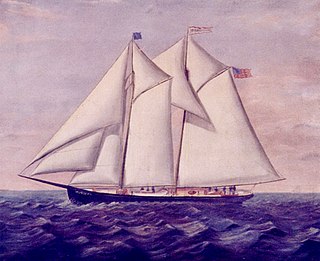
The Thomas F. Bayard was a 19th-century Delaware River pilot schooner built by C. & R. Poillon shipyard in 1880. She spent sixteen years as a pilot boat before being sold during the Yukon Gold Rush in 1897. She was sold again in 1906 for Seal hunting, then purchased by the Department of Marine & Fisheries where she guided freighters into New Westminster, British Columbia for 43 years. She was then acquired by the Vancouver Maritime Museum in 1978. When she sank at her mooring in 2002, the International Yacht Restoration School, Mystic Seaport and the Vancouver Maritime Museum, removed the vessel in pieces for the archeological teams to study and document the remains of her hull. The Thomas F. Bayard Collection, at the Vancouver Maritime Museum, contains the documents, history and preservation efforts.

The William W. Ker was a 19th-century Pennsylvania pilot schooner built in 1889 in Wilmington, Delaware. She was designed by Edward Burgess for the Pennsylvania pilots and was built for speed. She was a favorite with the pilots and was considered the fastest pilot boat on the coast. The Ker was hit and sank by a steamer off the Five Fathom Bank in 1900.
